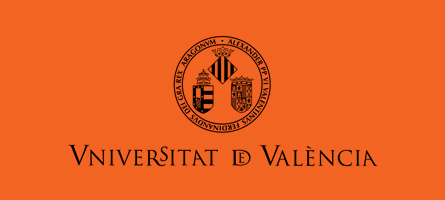Staging and storing data sprint-based research results: a communication design approach
DOI:
https://doi.org/10.7203/drdcd.v1i8.241Resum
Data sprints are multidisciplinary, time-limited, practice-oriented, and group activities that explore complex issues through data gathering, visualization, and analysis. Data sprints usually conclude with final presentations where participants showcase the research process they followed and the achieved results. Although this activity is now widespread in some research centers, there does not appear to be a data-sprint tailored dissemination format that can support the organization, archive, and online diffusion of results. Starting from the experience of a data sprint on Digital Methods, the paper describes the design process of a digital format which condenses and reinterprets good practices already in use in current supports for disseminating data sprints results. The design process of the format is structured in two steps: (i) designing and (ii) staging the format. The former aims to dissect and recompose data sprint results in hierarchical block structures filled with variable contents; the latter describes outcomes that emerged during a preliminary evaluation phase with experts and a stress-test activity. The format is a container that participants can fill at the end of a data sprint to organize, archive, and present research results. Evaluation activities confirmed the efficiency of the format, which is distinguished by its nested structure and flexibility with different content. Future research opportunities concern the ultimate implementation of the format as a public Content Management System to be used even outside data sprint contexts, such as disseminating more thorough research and teaching students how to structure Digital Methods research.
Referències
Anceschi, G., 1992. L’oggetto della raffigurazione. ETASLIBRI.
[Author Blinded], [Author Blinded], 2016. Designing diagrams for social issues. Presented at the Design Research Society Conference 2016.
[Author Blinded], [Author Blinded], [Author Blinded], 2019. O papel do designer no contexto do Data Sprint, in: MÉTODOS DIGITAIS TEORIA-PRÁTICA-CRÍTICA. Lisbon.
[Author Blinded], [Author Blinded], [Author Blinded], [Author Blinded], 2020. RESEARCH PROTOCOL DIAGRAMS AS DIDACTIC TOOLS TO ACT CRITICALLY IN DATASET DESIGN PROCESSES. Presented at the 14th International Technology, Education and Development Conference, Valencia, Spain, pp. 9034–9043.
Bounegru, L., Gray, J., Venturini, T., Mauri, M., 2018. A Field Guide To “Fake News” And Other Information Disorders. Zenodo.
Ciuccarelli, P., [Author Blinded], 2019. Beyond visualization, in: Hotson, H., Wallnig, T. (Eds.), Reassembling the Republic of Letters in the Digital Age: Standards, Systems, Scholarship. Göttingen University Press, Göttingen, pp. 299–314.
EU Parliament and the EU Council, 2018. FDJ 9, 54–57.
Lupo, E., [Author Blinded], Lonardo, E., 2021. Towards a new design culture of scientific production – Innovating the formats of scientific publication of design, in Design Culture(s). Cumulus Conference Proceedings Roma, Volume #2. pp. 1082–1097.
Rittel, H.W.J., Webber, M.M., 1973. Policy Sci 4, 155–169.
Rogers, R., 2013. Digital methods. The MIT Press, Cambridge, Massachusetts.
Rogers, R., 2017. Foundations of Digital Methods: Query Design. pp. 75–94.
Venturini, T., 2014. SSRN Journal.
Ziewitz, M., 2016. Science, Technology, & Human Values 41, 3–16.







